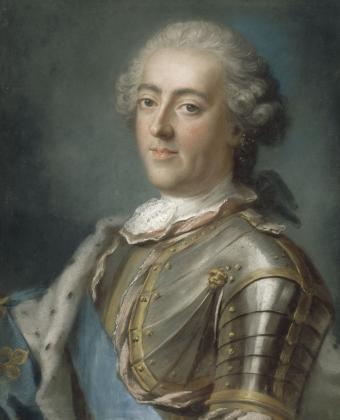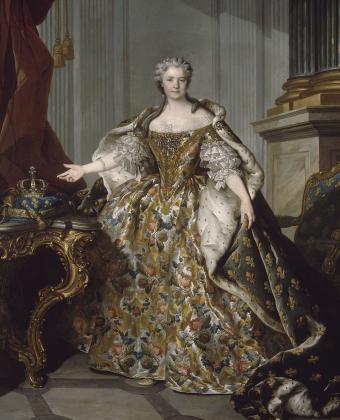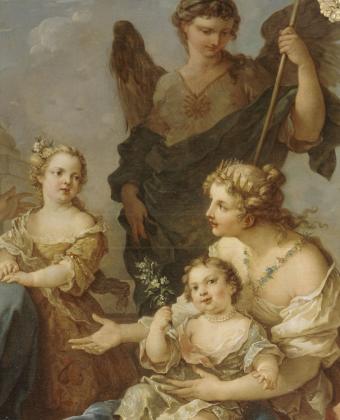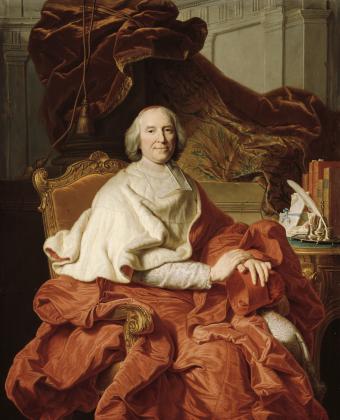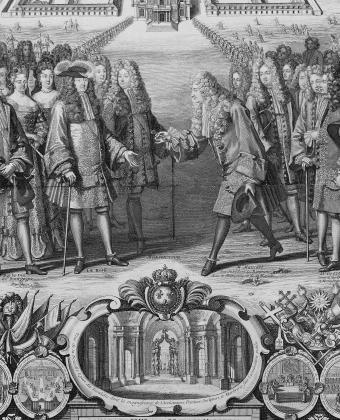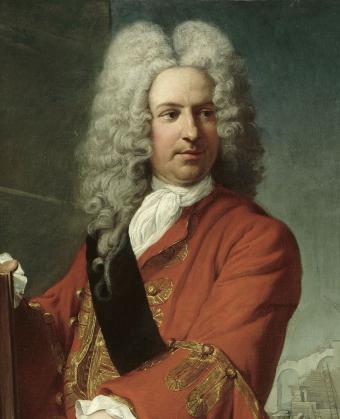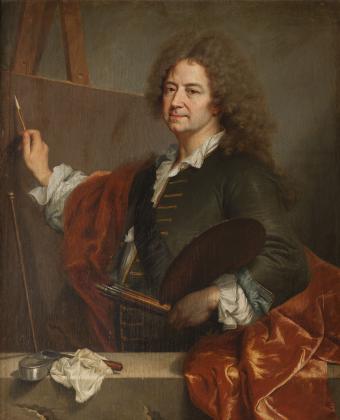By the time he met Madame du Barry, Louis XV was already an old man. He had outlived his son, the Dauphin Louis Ferdinand, his wife Marie Leszczyńska and his first official mistress and later close friend, Madame de Pompadour, among others. When the Duke of Richelieu heard about Jeanne Bécu, he sought to introduce her to Louis XV. The meeting was arranged in 1768 thanks to Le Bel, Premier Valet de la Chambre du Roi. Having been hastily married off to the Count Guillaume du Barry, in 1768 the new Countess was presented to the Court and became the official mistress of the monarch, who was bedazzled by her beauty. All this in spite of the best-laid plans of the Duke of Choiseul, who was hoping to install his sister the Duchess of Grammont in this privileged position.
Like all royal mistresses, Madame du Barry lived comfortably. After moving in on the second floor of the King's chambers she began to enjoy the perks of her position, receiving jewellery and estates from the king, including the Louveciennes Estate where she stayed regularly. Fascinated by craftsmanship and painting, she commissioned numerous pieces from the joiner Delanois, the cabinet-maker Leleu, and the painters Fragonard and Vien. She was a personal friend of Voltaire, whom she visited regularly until his death in 1778.
But the king's chosen mistress was not immune to the intrigues of the Court. Her beauty was a source of jealousy, and doubts surrounding her origins earned her the scorn of the Dauphine Marie Antoinette, who sided with Choiseul. In 1771 Madame du Barry finally triumphed over her old enemy the Duke, who was sent away by Louis XV.
Upon the king's death in May 1774, his successor Louis XVI banished her from Versailles and sent her to the Pont-aux-Dames convent in Meaux. In 1776 she retired to Louveciennes. Denounced to the authorities during the Terror, she died at the guillotine in December 1793.
ANECDOTE
Like all royal mistresses, Madame du Barry lived comfortably... Fascinated by craftsmanship and painting, she commissioned numerous pieces from the joiner Delanois, the cabinetmaker Leleu and the painters Fragonard and Vien. She was a personal friend of Voltaire, whom she visited regularly until his death in 1778.




